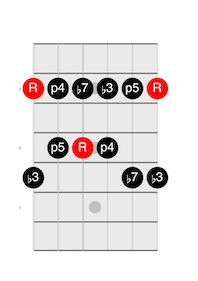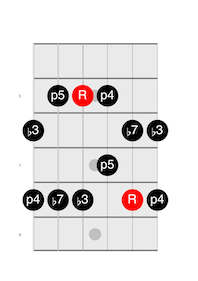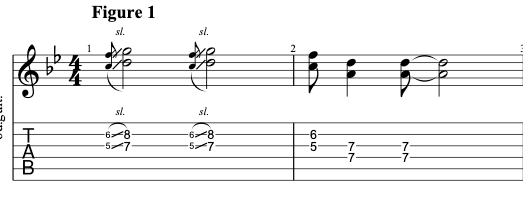Witchy Woman Guitar Lesson: An Insider’s Look at the Eagles’ Signature Sound
The Eagles are widely regarded as one of the greatest rock bands especially known for their exceptional guitar skills.
If you want to level up your rock guitar game then look no further than this guitar lesson on how to play in the style of “Witchy Woman”.
Who wrote Witchy Woman?
"Witchy Woman" was written by Don Henley and Bernie Leadon. Leadon a founding member of the Eagles had actually already started writing the "Witchy Woman" riff when he was a member of the band the Flying Burrito Brothers.
The song came to life when Leadon went over to Henley’s new spot where he was living in an old house near the Hollywood Bowl in Los Angeles. Henley recalled Leadon coming over one day and playing a “Strange, minor-key riff that sounded sort of like a Hollywood movie version of Indian music.”
He thought it had a haunting quality to it and this became the rough version they put down on cassette tape. Later it was recorded in the studio with the full band and released as the second single from the Eagles' debut album in 1972.
The Signature Riff
The opening signature riff is actually double-tracked guitars with each guitar playing just one single note at a time. In the video above I demonstrate a way of playing both parts at once on one guitar. This is the approach I would take if I was playing this riff alone or if I was the only guitarist in a band.
The master scale used here is the G minor pentatonic scale, however, there is the note A added to the scale which is a common sound used in many rock riffs and solos. The riffs and harmonies primarily use this scale to create the haunting sound Henley described above.
To play the full scale in two octaves you can start on the 3rd fret of the low 6th string and play this pattern:

Here’s another way of looking at those same frets and strings:
6th string frets = 3, 6
5th string frets = 3, 5
4th string frets = 3, 5
3rd string frets = 3, 5
2nd string frets = 3, 6
1st string frets = 3, 6
Another pattern used in this song is the next position up of this scale starting on the 6th fret of the 6th string like this:

The second pattern here can also be thought of like this:
6th string frets = 6, 8
5th string frets = 5, 8
4th string frets = 5, 8
3rd string frets = 5, 7
2nd string frets = 6, 8
1st string frets = 6, 8
To play a riff in this style try combining notes of the pentatonic scale in double-stops like this:

A lot of the riffs in the song are really built around the interval of 4ths. An interval is essentially the distance between two notes. So for instance in the above example, the notes being used at the beginning are a D and a G.
These two notes are a 4th apart. Meaning there are 4 letter names in the musical alphabet between the two notes.
1 2 3 4
D, E, F, G
This is a very simplistic way of thinking about the concept of intervals and the note names and sharps or flats will vary in different keys but this basic idea shows the relationship between those two notes and what they sound like in real music.
The Groove
Once the opening riff ends the band goes into a really cool groove all based around a Gm chord. This song is in the key of Gm, but instead of just strumming a simple chord try this riff below to get an example of how you can create a fun R&B rhythm pattern in place of just strumming a bar chord.

Here we are hammering into the root note on the 4th string 5th fret from the note F a whole step below. This again uses the pentatonic scale and implies a Gm7. Then note the use of more double-stops on the 3rd and 4th strings at the 3rd fret and also the 5th fret. Playing a riff like this is essentially like doing a little dance around the basic Gm 4th string chord that can be played like this:

The idea to take away from here is that even just a simple one-chord vamp can become a really cool guitar part if approached using these rhythm devices.
Another approach you’ll hear used in countless Eagles songs is a backbeat rhythm. This is where the guitar player plays accents on beats 2 and 4 in the measure. This can be done in a lot of different ways but one approach is to make the chords staccato meaning short and disconnected like this:

The basic progression here is just a 4-bar pattern:
Gm (1 bar)
D (2 bars)
Gm (1 bar)
When you play this type of rhythm really try to listen to the drummer. Often for this type of groove, they will be hitting the snare drum right with your rhythm on beats 2 and 4.
When I play this type of feel with live drummers I end up staring right at them hitting the snare drum and I really try to lock the rhythm in with them. Doing this makes what you are playing so much more powerful and also helps glue the entire band together rhythmically.
Leads And Fills
“Witchy Woman” is chock-full of great leads and riffs where multiple guitars are playing together. They did this in so many of their hit songs, for instance, check out the ending solos on “Hotel California.” The solos are literally doubled guitars harmonizing riffs together.
Doing this on your own can be tough to pull off but one way to get there is using double-stops like how I mentioned above and in the video.
Here is another riff in this style that again combines more use of double-stops.
This riff begins with a pre-bend on the 5th fret of the 2nd and 3rd strings. A pre-bend is where you bend the notes up before you pluck the strings. Do this first and then pluck the strings and then release the bend down. This creates an incredible sound.

You could then continue with a similar riff in the style like this:

Conclusion
The guitar work in "Witchy Woman" by The Eagles is a fantastic example of the band's signature sound and style. By taking a look at the different chords, scales, techniques, and grooves used in the song, you can gain a deeper appreciation for the skill and artistry of the musicians behind the music.
It's important to note that the band's playing abilities are at an extremely high level. Replicating these guitar styles is no easy feat, so take your time and start with the basics before gradually building up.
Whether you're a beginner or an experienced player, incorporating some of these techniques into your playing can help you develop your own unique rock guitar style and sound. So grab your guitar, give "Witchy Woman" a try, and for another great rock lesson check out “Call Me The Breeze” next!
Like this blog post? Get Jon’s best guitar lessons straight to your inbox.
